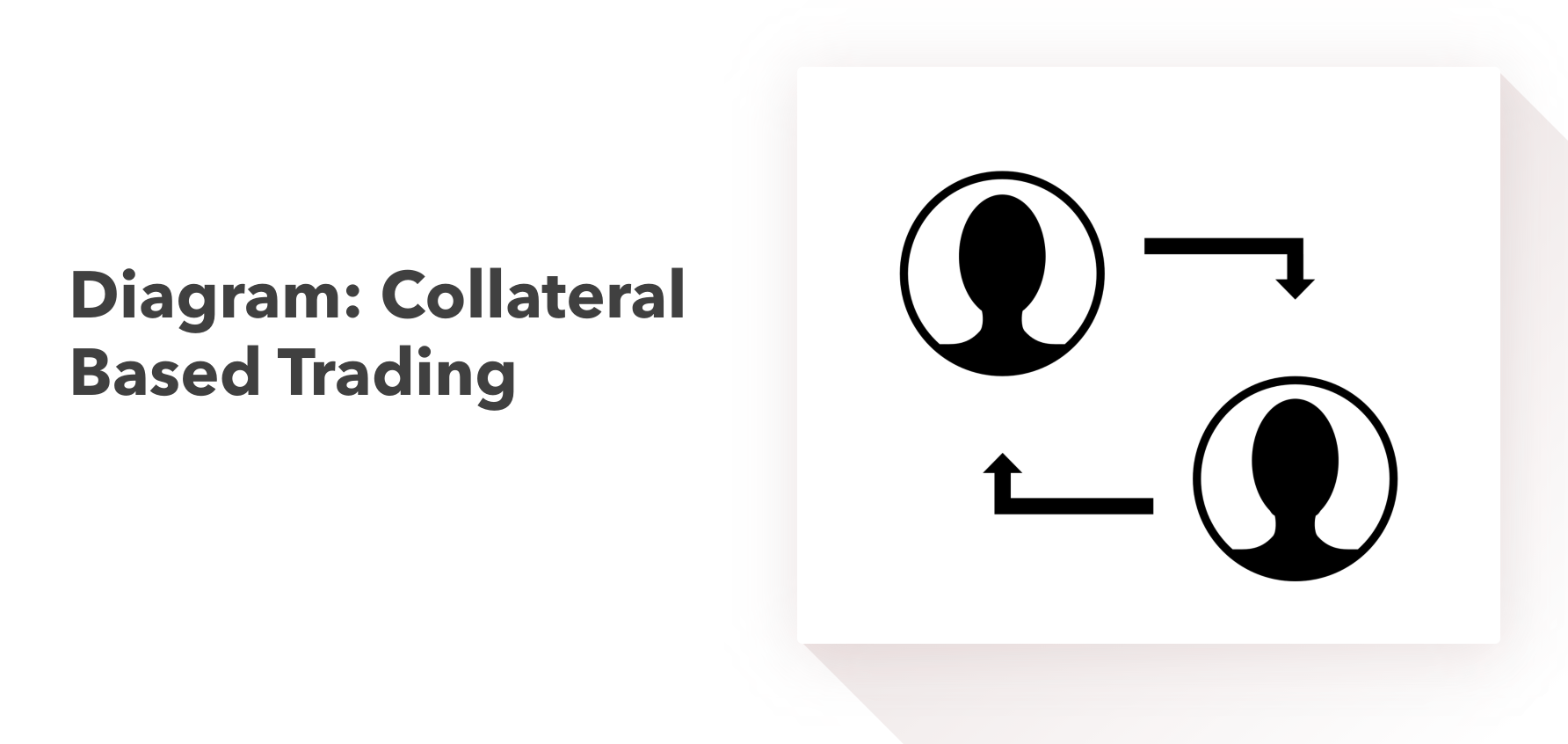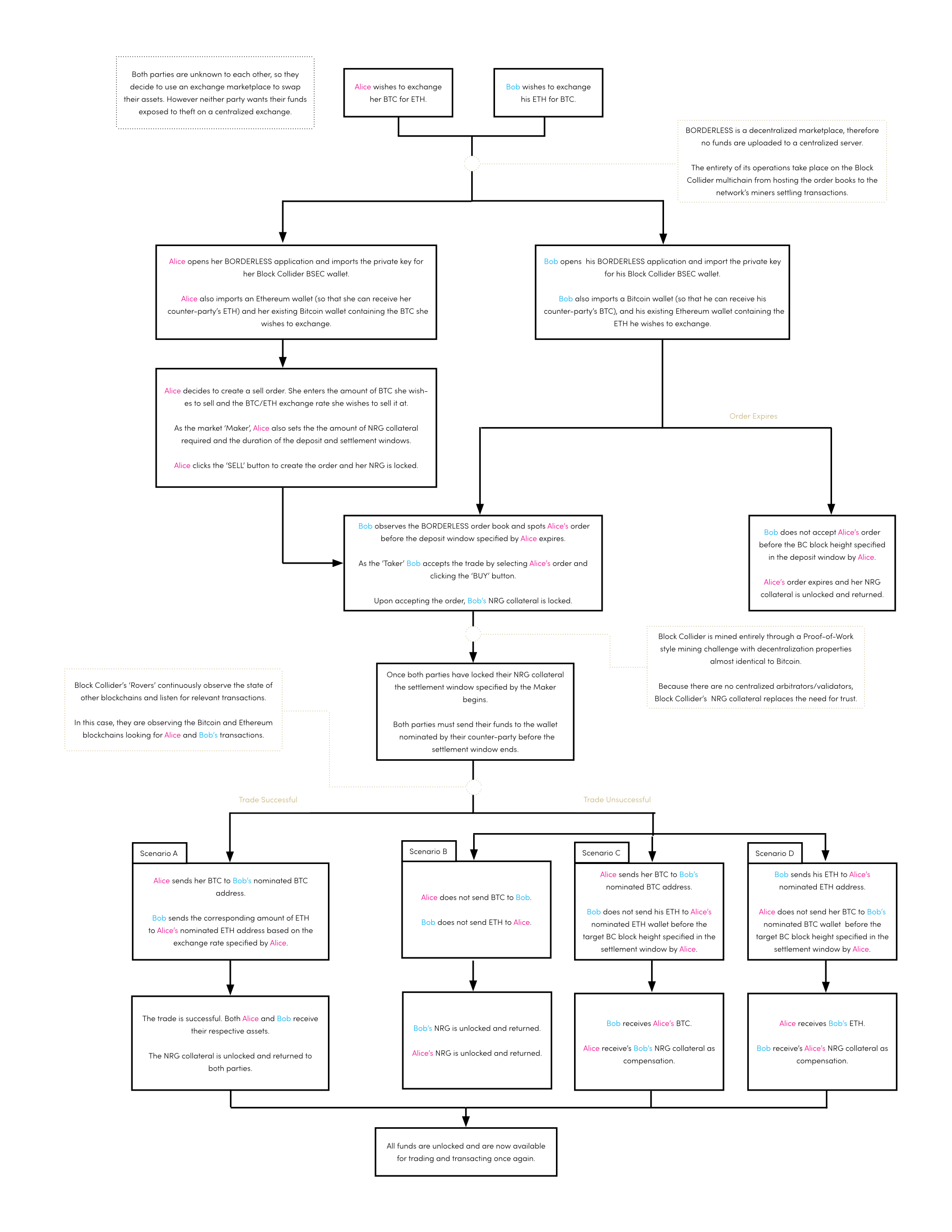Diagram: Collateral Based Trading

Collateral Based Trading on the interchange
This process begins by first downloading the Overline interchange application and importing your respective wallets. Once in an active session on the interchange, you will be able to observe the order books for all available pairs. At this point you can choose to either make a new order, or take (an) existing order(s).
Maker vs. Taker
As a maker you dictate the terms of your trade such as the amount of Asset X you want to buy and the amount of Asset Y you want sell. The maker will also lock up collateral for the trade in terms of Overline.
As a taker you agree to the terms of an existing maker order and lock up the equivalent amount of Overline collateral for the order you want to take.
Controlled Outcomes
Once a maker and taker have matched there are four cases that can occur:
- In the first case, both parties send their assets in the settlement window and they receive their collateral back.
- In the second case, neither party sends their assets in the settlement window and they receive their collateral back.
- In case three, the maker sends their assets to the taker, but the taker does not send their assets to the maker, thereby allowing the maker to spend the taker’s collateral.
- In cases four, the taker sends their assets to the maker, but the maker does not send their assets to the taker, thereby allowing the taker to spend the maker’s collateral.
This method of using Overline collateral on the interchange to control the trade outcomes guarantees trust-free, cross-chain, no-intermediary trade.
Flow Chart of Collateral Based Trading Model
The following flowchart outlines each of the above outcomes as well as the motivations for both makers and takers on the Overline interchange.

Updated about 1 year ago
